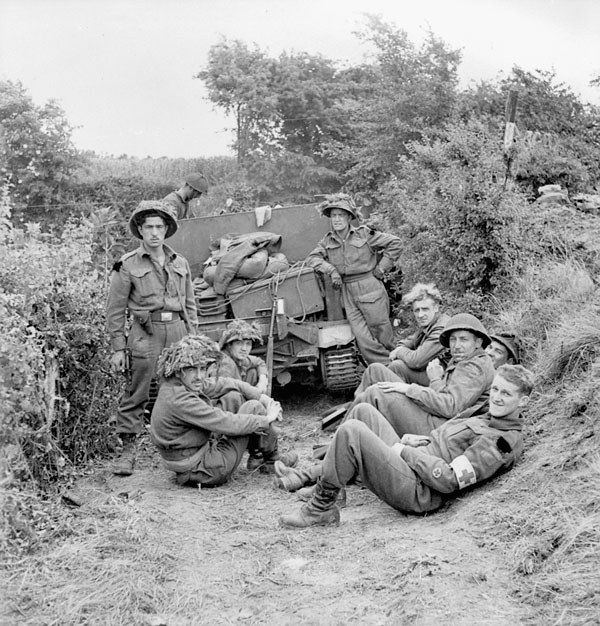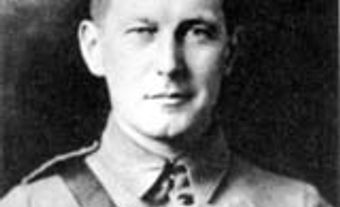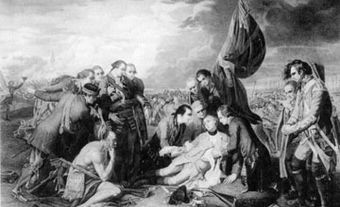
On 6 June 1944, Canadian forces took part in the greatest amphibious operation in military history. Over 10,000 Canadian sailors in 110 warships, 15 RCAF squadrons and 14,000 soldiers took part in D-Day. Juno Beach, one of five assault beaches, was assigned to the Canadian Army’s 3rd Infantry Division and 2nd Armoured Brigade.
The invasion had been years in the planning. The Canadian disaster at Dieppe proved what an extreme challenge lay ahead. Finally, a target date was set, and the planners settled on the coast of Normandy. It would be risky. German forces in Normandy, led by the experienced General Erwin Rommel, had been strengthening the Atlantic Wall with millions of mines and obstacles.
Who were the Canadian soldiers? “You have to remember that we were young, irresponsible, and slowly growing up — but not normal growing up,” recalled Rolph Jackson of the Queen’s Own Rifles, “because we joined the army as kids and four years later we were at the beach.” Jackson was one of many veterans interviewed for Lance Goddard’s D-Day: Juno Beach, Canada’s 24 Hours of Destiny (2004).
The flotilla of some 7,000 ships crossed the English Channel in churning seas and lashing winds. “Everybody was sick,” recalled Jack Martin of the Queen’s Own Rifles. “Our platoon commander…had to run to the side, and he puked and lost all his false teeth and everything there.”

“Daylight. We had never felt so alone in our lives,” wrote Charlie Martin in Battle Diary: From D-Day and Normandy to the Zuider Zee and VE (1994), his memoir of the campaign. “There was mist and rain. Bernières-sur-Mer became visible. Fifteen hundred yards of beach stretched from the far left to the far right. Everything was dead quiet. It could have been a picture postcard of any one of a hundred tiny French beaches with a village behind — not the real thing.”
The order rang out: “Down ramp.” The moment the ramp came down, heavy machine-gun fire broke out from somewhere back of the seawall. Mortars were dropping all over the beach… I said to Jack, across from me, and to everyone: “Move! Fast! Don’t stop for anything. Go! Go! Go!” We raced down the ramp, Jack and I side by side, the men closely following. We fanned out as fast as we could, heading for that seawall. (Charlie Martin, Battle Diary)
Despite the massive bombardment from the Allied battleships, the German bunkers and pillboxes, built of thick concrete reinforced with steel, proved resistant to anything but a direct hit. The soldiers would have to take them out one by one.
The first to reach the shore were the engineer units, which were tasked with clearing mines and obstacles from the beaches. The Germans responded with intense fire against both men and landing craft. At 0745 hours the tanks of the 1st Hussars, a regiment from London, Ontario, landed on the beach facing Courseulles-sur-Mer, followed by the Royal Regina Rifles. A few minutes later, the Royal Winnipeg Rifles landed west of Courseulles. Unlike the Regina unit, they landed before any tanks. Many died before they even reached the shore.
“You couldn’t stand still,” recalled Francis Godon of the Royal Winnipeg Rifles, “because if you stand right there the machine guns are going to be after you... So long as you were moving — they were guessing.”

Francis Godon at training camp in North Bay, Ontario, 1942.
By 0800 hours the Canadians had secured their first beachhead at Courseulles-sur-Mer. The Royal Regina Rifles seized most of the German strong points. They had trained for house-to-house combat and now put that training to use, battling the Germans street by street.
Further west, the Canadian Scottish landed and quickly captured a German emplacement. They pressed inland towards Graye-sur-Mer, where they joined the Royal Winnipeg Rifles. The North Shore (NB) Regiment came under intense fire at St. Aubin-sur-Mer, where they faced a high seawall lined with German fortifications. It took most of the morning to move along the wall and outflank the defences.
“I was scared to death, there’s no doubt about that,” recalled Frank Ryan of the North Shore Regiment, “Anybody that says they weren’t scared, they’re lying.”
At 0812 the Queen’s Own Rifles landed at Bernières-sur-Mer. Many of the landing craft could not get all the way to shore because of sandbars and other obstacles and the men were forced to disembark in deep water. They waded in and raced across an open beach while under fire. The regiment lost 65 casualties in the first few minutes. Once they had secured the beach, they worked inland, crossing minefields while under attack from German defenders armed with machine guns and mortars.
As the tide rose, the beach became narrower, causing congestion of men and materials. Royal Engineers worked feverishly to open gaps or exits from the beaches, including the construction of ramps over the seawall. At the same time, Canadian soldiers moved inland, picking their way through the nests of snipers.
By 1000 hours the Canadians had succeeded in capturing all their preliminary objectives along the coast of Juno Beach, from St. Aubin to Courseulles. By noon every unit of the 3rd Canadian Division was on shore and the Royal Regina Rifles were engaged in a ferocious battle with the last great obstacle, a German fortification at Courseulles.
Although the invasion was a success, the planners had been overly ambitious. Only one Allied unit — Canada’s 1st Hussars — achieved all of its overall objectives that day, capturing the Caen-Bayeux highway intersection late in the afternoon.
As the adrenaline wore off, the men began to feel hungry. Many had not eaten for 24 hours. They did not exactly enjoy a feast. “Most of the time it was just eating these biscuits and sardines,” recalled Ernie Jeans of the 1st Canadian Parachute Battalion. “Got sort of sick of eating biscuits and sardines.”
As the light faded, many Canadian units began digging in for the night. Some slept while others kept watch, prepared for a German counter-attack. Around the same time, the North Nova Scotia Highlanders and the Sherbrooke Fusiliers fought their way into Villons les Buissons and Anisy. As darkness fell on Normandy, a wide stretch of land, 10 to 16 km deep, was controlled by Canadian forces. Operation Overlord was a success. The Atlantic Wall had been breached.
Canadians figured prominently in the victory and had paid a dear price as 359 soldiers had been killed, 584 wounded and 131 taken prisoner.

“It was awful,” recalled Captain Darius Albert, medical officer of Le Régiment de la Chaudière. “’I’d never seen so many wounded men. In the first two hours, I must have attended at least 200 of them. They didn’t scream or swear or shout. They just moaned.”
“Time has been as remorseless an enemy as the Hitlerjugend snipers in the hedgerows of Normandy, and far more enduring,” write Jack Granatstein and Desmond Morton in Bloody Victory: Canadians And The D-Day Campaign 1944 (2002). Remembering those who fought in that distant battle is the least of the obligations we owe them.

Jack Hilton in the cockpit of the Hurricane Aircraft, part of 438 Fighter Squadron. Photo taken at AUX Airfield at Wellingore, England, 1942.
JACK HILTON, RCAF
Canadian pilot Jack Hilton provided close-up support for the army during the invasion of Normandy on D-Day. Flying above the beaches, Hilton marvelled at the invasion below — not at all envious of the men on the ground. “We did close support for the army on D-Day. We went at some guns sitting in the cliffs when the troops are landing. And we were only about 1,800 feet sitting because it was so foggy and raining. It was terrible weather, absolutely terrible weather.… It was awful, mainly it was watching those boys land and run up the beach. You watch and see these little ants run up the beach and thought: ‘Oh my God, they’re real heroes.’” Hear Jack’s story on The Memory Project archive.

 Share on Facebook
Share on Facebook Share on X
Share on X Share by Email
Share by Email Share on Google Classroom
Share on Google Classroom


